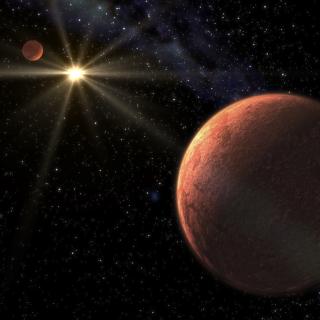Bibcode
Luque, R.; Pallé, E.; Kossakowski, D.; Dreizler, S.; Kemmer, J.; Espinoza, N.; Burt, J.; Anglada-Escudé, G.; Béjar, V. J. S.; Caballero, J. A.; Collins, K. A.; Collins, K. I.; Cortés-Contreras, M.; Díez-Alonso, E.; Feng, F.; Hatzes, A.; Hellier, C.; Henning, T.; Jeffers, S. V.; Kaltenegger, L.; Kürster, M.; Madden, J.; Molaverdikhani, K.; Montes, D.; Narita, N.; Nowak, G.; Ofir, A.; Oshagh, M.; Parviainen, H.; Quirrenbach, A.; Reffert, S.; Reiners, A.; Rodríguez-López, C.; Schlecker, M.; Stock, S.; Trifonov, T.; Winn, J. N.; Zapatero Osorio, M. R.; Zechmeister, M.; Amado, P. J.; Anderson, D. R.; Batalha, N. E.; Bauer, F. F.; Bluhm, P.; Burke, C. J.; Butler, R. P.; Caldwell, D. A.; Chen, G.; Crane, J. D.; Dragomir, D.; Dressing, C. D.; Dynes, S.; Jenkins, J. M.; Kaminski, A.; Klahr, H.; Kotani, T.; Lafarga, M.; Latham, D. W.; Lewin, P.; McDermott, S.; Montañés-Rodríguez, P.; Morales, J. C.; Murgas, F.; Nagel, E.; Pedraz, S.; Ribas, I.; Ricker, G. R.; Rowden, P.; Seager, S.; Shectman, S. A.; Tamura, M.; Teske, J.; Twicken, J. D.; Vanderspeck, R.; Wang, S. X.; Wohler, B.
Bibliographical reference
Astronomy and Astrophysics, Volume 628, id.A39, 18 pp.
Advertised on:
8
2019
Journal
Citations
131
Refereed citations
122
Description
We report the detection of a transiting Earth-size planet around GJ 357,
a nearby M2.5 V star, using data from the Transiting Exoplanet Survey
Satellite (TESS). GJ 357 b (TOI-562.01) is a transiting, hot,
Earth-sized planet (Teq = 525 ± 11 K) with a radius of
Rb = 1.217 ± 0.084 R⊕ and an orbital
period of Pb = 3.93 d. Precise stellar radial velocities from
CARMENES and PFS, as well as archival data from HIRES, UVES, and HARPS
also display a 3.93-day periodicity, confirming the planetary nature and
leading to a planetary mass of Mb = 1.84 ± 0.31
M⊕. In addition to the radial velocity signal for GJ
357 b, more periodicities are present in the data indicating the
presence of two further planets in the system: GJ 357 c, with a minimum
mass of Mc = 3.40 ± 0.46 M⊕ in a 9.12
d orbit, and GJ 357 d, with a minimum mass of Md = 6.1
± 1.0 M⊕ in a 55.7 d orbit inside the habitable
zone. The host is relatively inactive and exhibits a photometric
rotation period of Prot = 78 ± 2 d. GJ 357 b isto date
the second closest transiting planet to the Sun, making it a prime
target for further investigations such as transmission spectroscopy.
Therefore, GJ 357 b represents one of the best terrestrial planets
suitable for atmospheric characterization with the upcoming JWST and
ground-based ELTs.
RV data are only available at the CDS via anonymous ftp to http://cdsarc.u-strasbg.fr
(ftp://130.79.128.5) or via http://cdsarc.u-strasbg.fr/viz-bin/qcat?J/A+A/628/A39
Related projects

Very Low Mass Stars, Brown Dwarfs and Planets
Our goal is to study the processes that lead to the formation of low mass stars, brown dwarfs and planets and to characterize the physical properties of these objects in various evolutionary stages. Low mass stars and brown dwarfs are likely the most numerous type of objects in our Galaxy but due to their low intrinsic luminosity they are not so
Rafael
Rebolo López

Exoplanets and Astrobiology
The search for life in the universe has been driven by recent discoveries of planets around other stars (known as exoplanets), becoming one of the most active fields in modern astrophysics. The growing number of new exoplanets discovered in recent years and the recent advance on the study of their atmospheres are not only providing new valuable
Enric
Pallé Bago